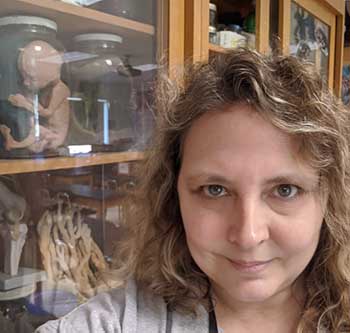
My school announced that the fall school year will start as remote learning due to wide scale community spread of Covid-19. I would much rather teach and person, but I do understand the concerns of parents, teachers, staff, and other community stakeholders.
Note: Many of the activities I created for remote learning I still use in my classes, even though they are in person. This case study on celiac disease. Assigning the activity on Google Classroom saves paper!
Many of us had some experience with remote learning when the was a massive country-wide shutdown in March of most schools. We were practically thrown into the deep end, and many teachers had very little experience using online learning tools. Some did better than others navigating apps like Zoom, Google Classroom, and other apps, but I think that overall, most teachers were able to continue some type of learning remotely.
For years, I have been posting resources online, so the transition wasn’t that difficult for me, though I did have to find creative ways for students to learn things from home and submit homework. There are some apps that I found very useful for my remote classroom. My choices may be different from others because each teacher, grade, and class has different challenges. A remote biology class probably looks very different from remote calculus class and I really can’t even imagine how remote kindergarten looks.
My Must-Have Apps
- Google Classroom – this isn’t much of a choice for me, the school has decided this is what our LMS (learning management system) will be, but I don’t have much to complain about. The interface is easy to use, you can organize by topic, and directly link videos. I do think their quiz interface is somewhat difficult to work with, but not impossible.
- Google Docs and Slides – these are super easy to work with and share, especially if you are using Google classroom. You can easily share a google doc with your students, make a copy for each student, and they can fill it out on their own. (This process also works for Word documents).
- Edpuzzle – Edpuzzle is an app that allows you to embed questions into videos. They have a huge searchable database, so you can even use or edit videos created by other teachers. I use Edpuzzle two ways. One, by sharing videos created by professionals like TedEd or SciShow and embedding questions for students to answer. The second way is sharing videos of my own lectures with embedded questions. Many of these questions are open-ended and designed to substitute for a class discussion. This is also how I know that students have watched the lecture.
- Screencast-o-matic – This is a screen sharing app so that I can put my google slides into the widow and also have a tiny video in the corner of me talking. These aren’t as polished as the Ted-Ed videos, but they do give my students a personal touch.
- Kami – this app allows students to annotate documents, to draw their own answers into the text. This was a life saver in anatomy classes where diagrams weren’t set up for students to write in answers. Students can annotate directly within Google classroom.
- Quizlet – I used Quizlet long before pandemic teaching and my students use it to practice labeling diagrams and learning difficult vocabulary. My anatomy students would even complain when I would forget to share practice quizzes with them. Quizlet allows them to make their own flashcards for studying. I don’t usually grade these exercises but you can link Quizlet to google classroom and potentially use it as an assessment.
With the school year fast approaching, I imagine I’ll be receiving tons of promotional emails from apps and platforms declaring that they can solve all of my remote teaching problems. Spoiler alert – they can’t. Most will offer some kind of trial for a period and then ask to you to pay for a subscription. Some subscriptions are very expensive. All of the apps on my list are also free because our budget is limited. Many do have “upgrade” options if you want more features.
Your list might be different than mine, and there might be something amazing out there that I should be using and just haven’t stumbled upon. How to manage labs and dissections still remains a challenge, but I’ve been exploring options at PhET and other virtual simulations. They are out there, but seem fairly limited if you don’t have any money to spend.
Example of a Lesson at Edpuzzle
This lesson was made with Google slides and Screencast-o-matic. I basically talked about each slide as I would do in class and then added questions for students to answer, like I would also do in class. I did modify my notes from past years, I needed to remove things like “Think-Pair-Share” and other classroom activities that break up lectures and ask students to do something. The Edpuzzle questions do not really have right/wrong answers and are intended to serve as a way for students to interact with the material and share their thoughts and a way for me to determine that the video was viewed. I will likely only be giving completion grades (1-5 pts) for these types of activities.

